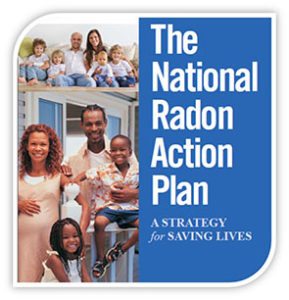 In recognition of Radon Action Month, Great Care and the American Lung Association are highlighting the dangers of the second-leading cause of lung cancer. The invisible, odorless gas that causes lung cancer – the #1 cancer killer — tests positive in 1 in 15 homes nationwide.
In recognition of Radon Action Month, Great Care and the American Lung Association are highlighting the dangers of the second-leading cause of lung cancer. The invisible, odorless gas that causes lung cancer – the #1 cancer killer — tests positive in 1 in 15 homes nationwide.
Often referred to as invisible enemy, radon cannot be seen, tasted or smelled radon. The gas claims an estimated 21,000 lives in the U.S. each year. The Environmental Protection Agency has designated January as National Radon Action Month.
“Many people don’t know that radon is radioactive and the second leading cause of lung cancer,” said Janice Nolen, assistant vice president of national policy of the American Lung Association.
“Because it’s invisible and odorless, they may not know they could have dangerous levels in their homes. This naturally occurring gas leaks into homes through spaces between the walls, floors, basements and foundations in buildings. Too often radon builds up to concentrations that cause lung cancer. Radon is the number one cause of lung cancer among nonsmokers. Take this seriously.”
The American Lung Association offers three simple steps that Americans can take now to reduce radon exposure:
1. Test homes for radon. January is a great time to test for radon. According to the U.S Environmental Protection Agency (EPA), dangerous levels of radon exist in nearly one in 15 homes. Inexpensive radon testing kits can be found at any local hardware store or online. Testing can also be done by a certified radon-testing professional. If dangerous levels of radon are found, homeowners can install a radon mitigation system, for about the same price as a large television screen, to decrease the risk of harmful exposure.
2. Speak up to lower radon risk in other indoor spaces. Radon can build up in all buildings, not only homes. Speak with local community officials and public health professionals to encourage radon testing – and mitigation systems if high levels are found – in schools and childcare facilities and other public and private facilities. Some states have laws requiring schools be tested.
3. Support policy steps to reduce radon levels indoors. The American Lung Association also encourages concerned citizens to support changes to policies that diminish the risk of radon. All state and local governments should adopt building codes to reduce indoor radon.
During real estate transactions, potential buyers should be informed about the radon levels in the home they’re considering.
“Testing for radon is easy,” Nolen says. “Testing allows homeowners to find out if their home has this carcinogen and protect the health of their families. High levels of radon are found in every state. Nearly 21,000 people die each year from lung cancer caused by radon.”
 Fighting radon requires workable strategies, and the American Lung Association led the development of the National Radon Action Plan, which aims to reach five million high-radon homes, apartment, schools and childcare centers to prevent an estimated 3,200 lung cancer deaths by 2020, to provide those tools.
Fighting radon requires workable strategies, and the American Lung Association led the development of the National Radon Action Plan, which aims to reach five million high-radon homes, apartment, schools and childcare centers to prevent an estimated 3,200 lung cancer deaths by 2020, to provide those tools.
“Strategies include building in radon testing and systems to reduce radon as standard practice in housing finance and insurance programs, and embedding radon risk reduction requirements in building codes,” say the American Lung Association.
According to the Radon Testing Lab, the naturally occurring radioactive gas is produced by the breakdown of uranium in soil, rock, and water, enters a structure as air pressure inside a home is usually lower than the pressure in the soil around your home’s foundation.
“Because of this difference in pressure, your house acts like a vacuum, drawing radon in through foundation cracks and other openings. Your home then traps the radon inside, where it can build up,” the lab says. “Any home may have a radon problem. This means new and old homes, well-sealed and drafty homes, and homes with or without basements. Radon may also be present in well water and can be released into the air in your home when water is used for showering and other household uses.”
The Radon Testing Lab says in most cases, radon entering the home through water is a small risk compared with radon entering your home from the soil. In a small number of homes, the building materials (e.g., granite and certain concrete products) can give off radon, although building materials rarely cause radon problems by themselves. In the United States, radon gas in soils is the principal source of elevated radon levels in homes.
The National Radon Defense Administration says radon poisoning symptoms resemble those of lung cancer: a persistent cough that doesn’t get better, difficulty breathing, chest pains, the coughing up of blood, wheezing, hoarseness and recurring respiratory infections such as pneumonia or bronchitis.
Learn more about radon at Lung.org/radon and questions about radon gas testing may be directed to the Lung Association’s toll-free Lung HelpLine (1-800-LUNGUSA).
The professionals at Great Care are available to talk with you and your family about all of your home care needs, including respite care. Great Care is a non medical in-home care agency providing quality and affordable elder care in Fishers, IN and the surrounding areas. Call (888) 240-9101 for more information.
Follow Us!